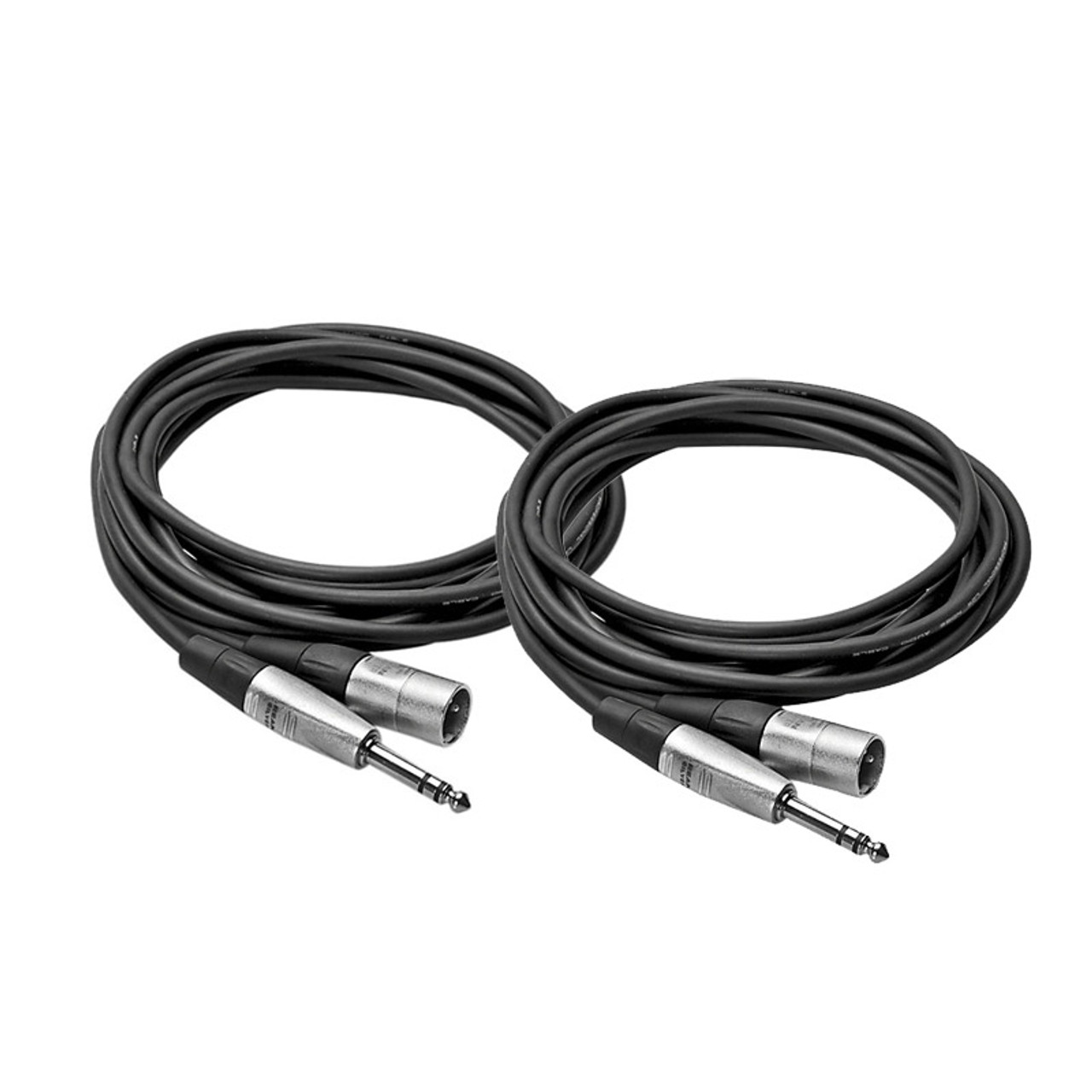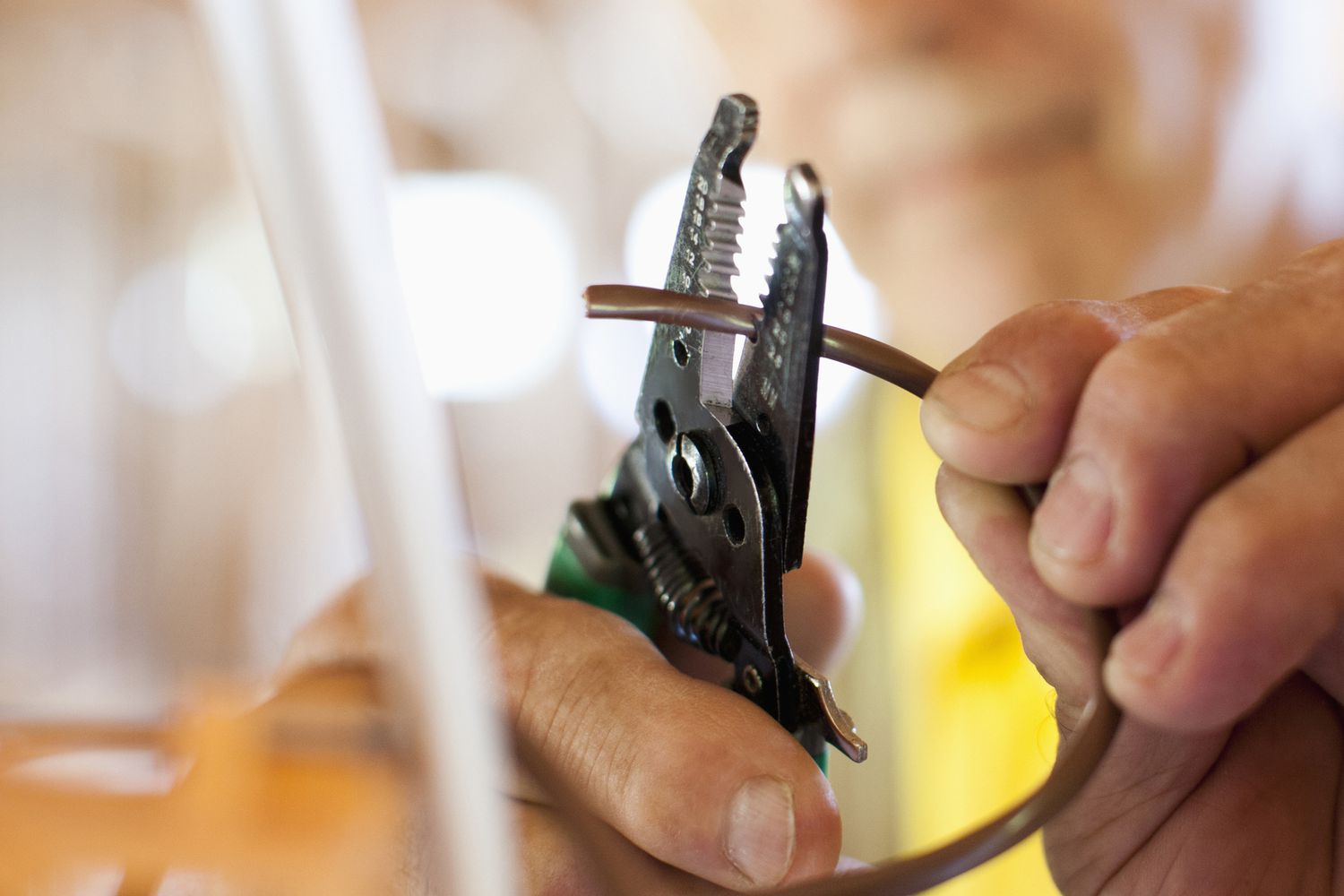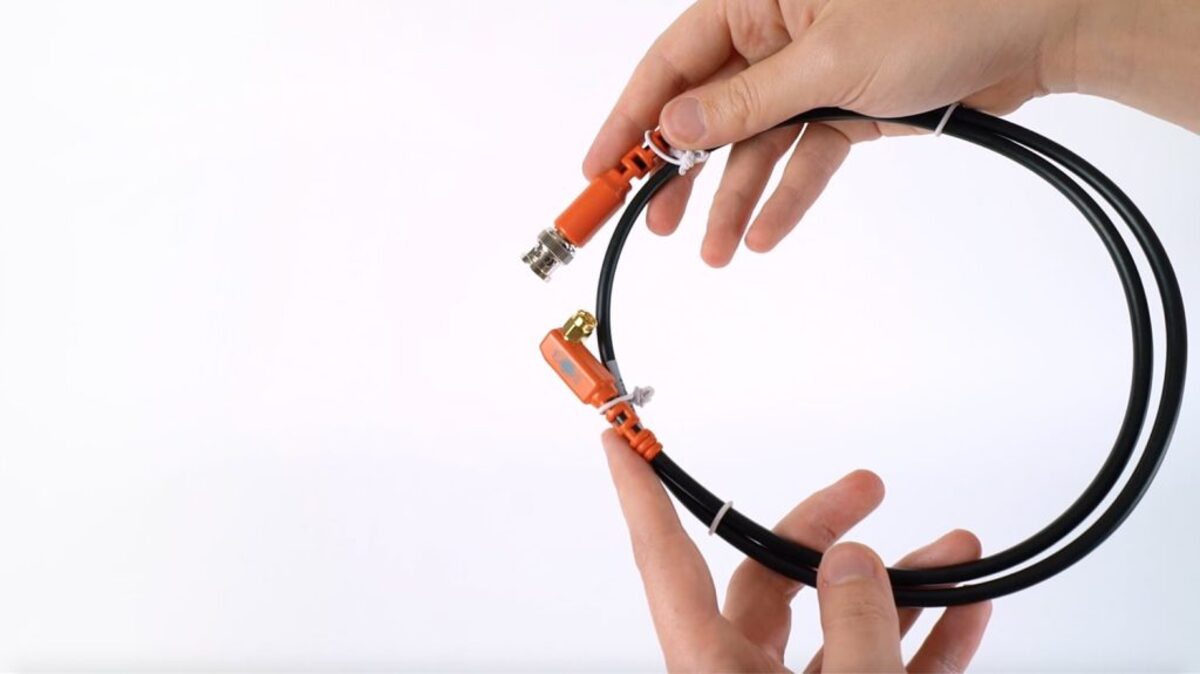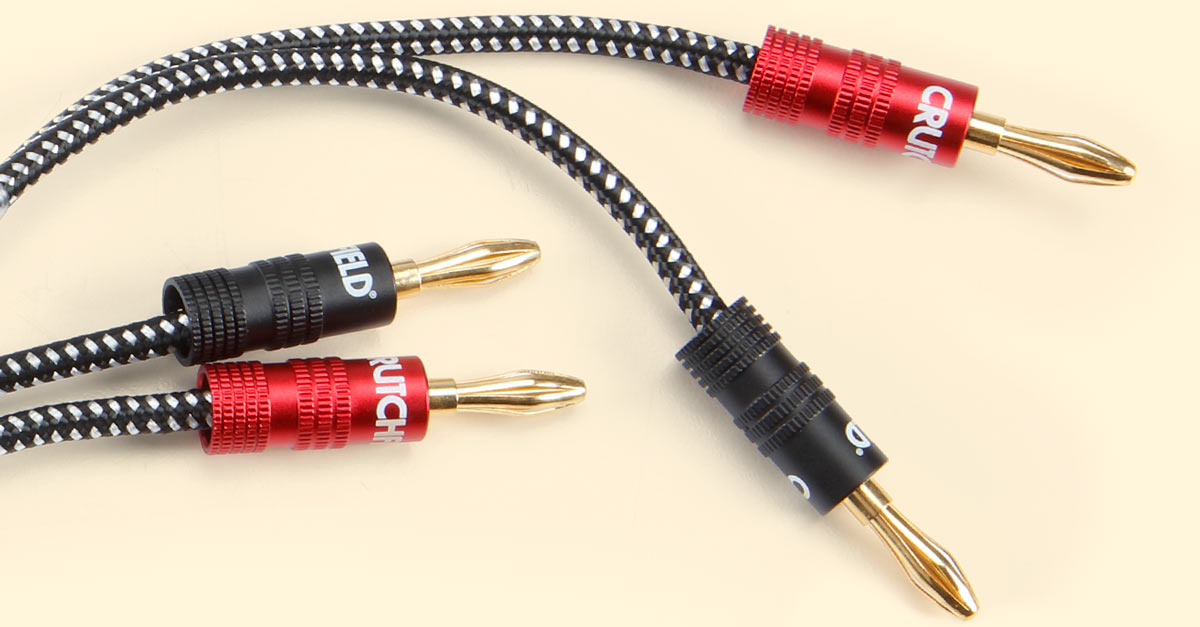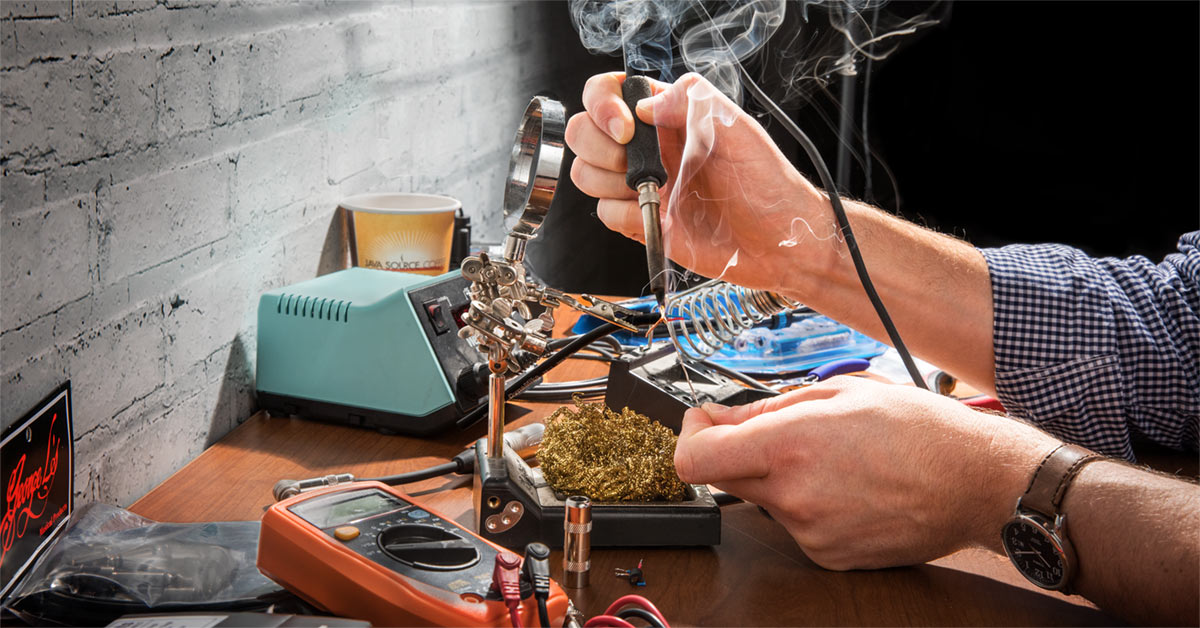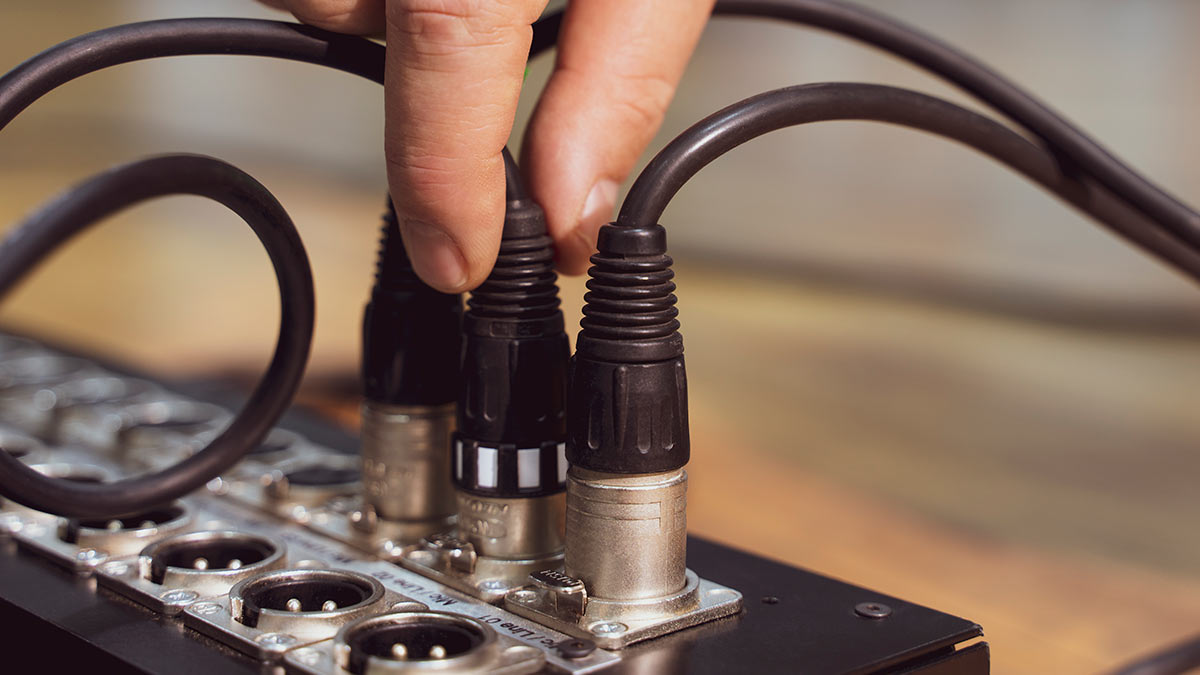Home>Production & Technology>Audio Cable>When Is A Core Needed On An Audio Cable
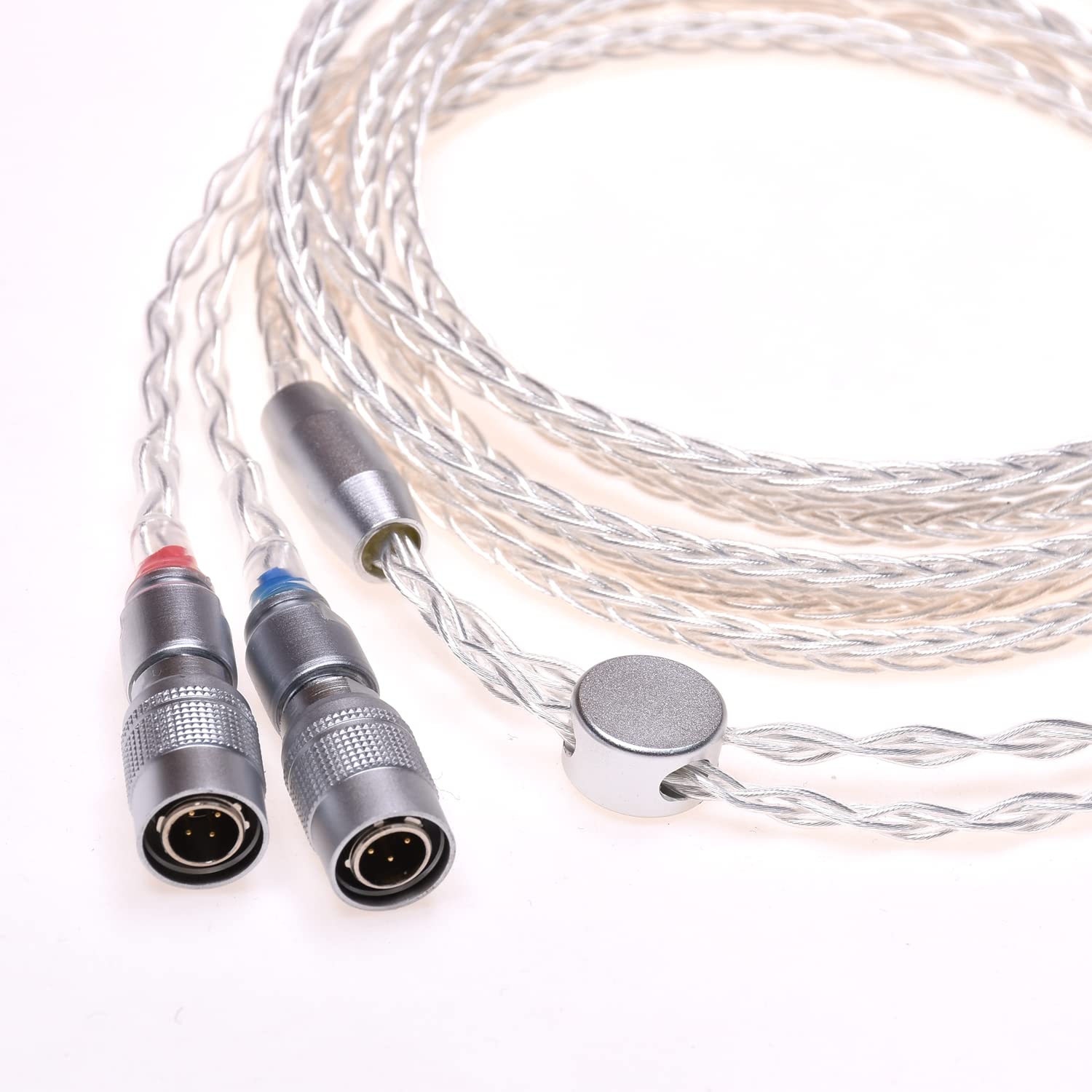

Audio Cable
When Is A Core Needed On An Audio Cable
Published: December 21, 2023
Learn why and when it is necessary to have a core on an audio cable. Find out how it affects the audio quality and discover the benefits it provides.
(Many of the links in this article redirect to a specific reviewed product. Your purchase of these products through affiliate links helps to generate commission for AudioLover.com, at no extra cost. Learn more)
Table of Contents
- Introduction
- Understanding audio cables
- What is a core on an audio cable?
- The purpose of a core on an audio cable
- When is a core needed on an audio cable?
- Factors to consider when deciding if a core is needed
- Benefits of using a core on an audio cable
- Drawbacks of using a core on an audio cable
- Alternatives to using a core on an audio cable
- Conclusion
Introduction
Welcome to the world of audio cables! Whether you’re a musician, audio engineer, or simply an audio enthusiast, you understand the important role that cables play in delivering high-quality sound. When it comes to audio cables, there are various factors to consider, including their construction, length, and connectors. One element that often comes up in discussions about audio cables is the presence of a core.
In this article, we will explore the concept of a core on an audio cable, its purpose, and when it is needed. We will also delve into the factors that influence the decision of using a core, the benefits it offers, and any drawbacks associated with its implementation. Additionally, we will discuss alternative options available for those who prefer not to use a core on their audio cables.
Whether you’re a professional audio engineer or a casual listener, understanding the role of a core on an audio cable can help you make informed decisions when selecting the right cables for your audio setup. So, let’s dive in and unravel the mysteries of audio cable cores!
Understanding audio cables
Before we delve into the topic of cores on audio cables, let’s have a quick refresher on what audio cables are and their importance in the realm of sound transmission.
Audio cables are specialized cables designed for transmitting audio signals from one device to another. They serve as the conduit for transferring audio information, ensuring that the sound is delivered accurately and without any degradation.
There are various types of audio cables available, including XLR cables, 1/4″ TRS cables, RCA cables, and optical cables, among others. Each type of cable is designed for specific applications and comes with its own unique set of characteristics.
Audio cables are constructed with a combination of conductive materials, insulation, shielding, and connectors. These components work in unison to minimize interference, signal loss, and noise, resulting in pristine audio transmission.
When selecting an audio cable, factors such as cable length, impedance, signal type, and connector compatibility should all be taken into consideration. These factors can significantly impact the overall audio quality and performance of your setup.
Now that we have a general understanding of audio cables, let’s dive into the concept of a core and its significance in the world of audio transmission.
What is a core on an audio cable?
A core, in the context of audio cables, refers to a central conductor that carries the audio signal from one end of the cable to the other. It is typically made of a highly conductive material such as copper, and it is surrounded by insulation and shielding layers to protect the signal from interference and signal degradation.
The core serves as the primary pathway for the audio signal, allowing it to travel through the cable with minimal resistance and distortion. It acts as the “highway” for the audio signal, ensuring that it reaches its destination accurately and faithfully.
The dimensions of the core can vary depending on the type of cable and its intended use. Thicker cores are often used for longer cable runs or applications that require high-fidelity audio transmission, while thinner cores are suitable for shorter distances or less critical applications.
Additionally, the core can also be comprised of multiple strands of conductor wire, which enhances flexibility and durability without sacrificing signal integrity. These strands are often twisted or braided together to minimize electromagnetic interference (EMI) and ensure a clean audio signal.
It is important to note that not all audio cables have a separate core. Some cables, known as coaxial cables, have a core surrounded by an insulating layer and an additional layer of shielding. Coaxial cables are commonly used in digital audio or video applications.
Now that we have a clear understanding of what a core is on an audio cable, let’s explore its purpose and why it is crucial in audio transmission.
The purpose of a core on an audio cable
The core on an audio cable serves a crucial purpose in ensuring the accurate transmission of audio signals. Its primary function is to act as a conductor, carrying the electrical audio signal from the source device to the destination device without loss or distortion.
When an audio signal is generated by a device such as a microphone or instrument, it is in the form of an electrical voltage variation. This voltage variation needs a pathway through which it can travel from the source to the destination, such as an amplifier or a mixer.
The core, being made of a highly conductive material like copper, provides the ideal channel for the audio signal to flow. Its low resistance allows for efficient transmission, minimizing any loss of signal strength along the way.
Furthermore, the core is often surrounded by insulation, which serves to protect the signal from outside interference. This insulation prevents the audio signal from leaking into the surrounding environment or from being affected by external electromagnetic fields.
In addition to the insulation, the core is also typically shielded. The shielding layer, usually made of a conductive material like aluminum or copper, provides further protection against electromagnetic interference (EMI). EMI can be caused by nearby electrical devices, power cables, or radio frequency signals, and shielding helps to block out these unwanted interferences, ensuring a clean audio signal.
Overall, the purpose of the core on an audio cable is to provide the necessary pathway and protection for the audio signal. By doing so, it ensures that the audio signal remains intact and faithful to the original source, resulting in high-quality sound reproduction.
Now that we understand the purpose of a core on an audio cable, let’s explore the factors that determine whether a core is needed in a specific audio setup.
When is a core needed on an audio cable?
The need for a core on an audio cable largely depends on the specific audio setup and the requirements of the audio transmission. In some cases, a core is essential for optimal signal transmission, while in others, it may not be necessary.
One scenario where a core is typically needed is in analog audio applications, where a continuous, uninterrupted electrical signal is transmitted. In these cases, the core serves as the primary conductor, carrying the audio signal from the source to the destination without loss or degradation.
Another instance where a core is necessary is when dealing with longer cable runs. As the length of the cable increases, the resistance of the conductor becomes more significant. A core with a larger cross-sectional area helps to minimize this resistance, delivering the audio signal with less signal loss.
In contrast, shorter cable runs may not require a core, especially if the audio signals being transmitted are robust and immune to interference. For example, digital audio signals transmitted via optical cables or digital interfaces are less susceptible to the same signal degradation issues as analog signals. In these cases, a core may not be mandatory.
It’s also important to consider the potential sources of interference in the environment. If there are high levels of electromagnetic interference (EMI) from nearby electrical devices or if the cables are in close proximity to power cables, a core can provide additional shielding and protection against these interferences.
Ultimately, the decision to use a core on an audio cable depends on a variety of factors, including the nature of the audio signal, the length of the cable run, and the presence of potential sources of interference. A careful evaluation of these factors can help determine whether a core is needed or if alternative options can be considered.
Next, let’s explore some key factors to consider when deciding whether or not to incorporate a core on an audio cable.
Factors to consider when deciding if a core is needed
When determining whether a core is needed on an audio cable, several key factors should be considered. These factors can help you make an informed decision based on the specific requirements of your audio setup. Let’s explore these factors in more detail:
1. Signal Type:
The type of signal you are transmitting plays a significant role in determining whether a core is necessary. Analog signals, which carry continuous electrical variations, often benefit from a core as it provides a reliable pathway for the signal to travel without degradation. On the other hand, digital signals, which are less susceptible to interference, may not require a core.
2. Cable Length:
The length of the cable run is an important consideration. In general, longer cable runs introduce more resistance, leading to potential signal loss and degradation. If you’re working with a longer cable run, a core with a larger cross-sectional area can help minimize resistance and ensure optimal signal transmission.
3. Interference Potential:
Another crucial factor to consider is the potential for electromagnetic interference (EMI) in your environment. If your audio setup is in close proximity to power cables or other sources of electromagnetic radiation, a core with shielding can provide added protection against interference, ensuring a clean and undistorted audio signal.
4. Audio Fidelity Requirements:
If you require high-fidelity audio reproduction, such as in professional recording studios or live sound applications, a core is often recommended. The core helps to maintain the integrity of the audio signal, minimizing any loss or degradation, resulting in a more accurate and faithful audio reproduction.
5. Budget and Convenience:
Lastly, it’s worth considering your budget and convenience. Cables with a core tend to be slightly more expensive as they often feature better build quality and additional shielding. Additionally, cables without a core may be more flexible and easier to manage, making them more convenient for certain applications.
These factors work together to determine whether a core is needed on an audio cable or if alternative options can be considered. It’s essential to evaluate your specific audio setup and requirements to make the most appropriate decision.
Now that we’ve explored the factors to consider, let’s dive into the benefits of using a core on an audio cable.
Benefits of using a core on an audio cable
Using a core on an audio cable offers several benefits that contribute to the overall quality and reliability of the audio signal transmission. Let’s delve into some of the key advantages:
1. Enhanced Signal Integrity:
The core, being the central conductor, ensures the efficient and accurate transmission of the audio signal. It minimizes signal loss and distortion, preserving the fidelity of the sound from the source to the destination. This results in a cleaner, clearer, and more faithful audio reproduction.
2. Reduced Interference:
The presence of a core with shielding helps protect the audio signal from electromagnetic interference (EMI). The shielding blocks out external electrical and radio frequency interferences, ensuring a clean and uninterrupted audio transmission. This is particularly beneficial in environments with high EMI potential, such as live performances or recording studios.
3. Long-Distance Transmission:
If you need to transmit audio signals over long distances, using a core becomes even more crucial. The larger cross-sectional area of the core reduces resistance, preventing signal degradation over lengthy cable runs. This ensures that the audio signal reaches its destination with minimal loss or distortion, regardless of the distance.
4. Durability and Reliability:
Cables with a core are often designed with durability in mind. The robust construction of the core, along with the insulation and shielding layers, provides protection against physical damage, bending, and wear over time. This results in a more reliable cable that can withstand the rigors of frequent use without compromising signal quality.
5. Professional Audio Applications:
In professional audio settings such as recording studios, live performances, or broadcast installations, using a core is highly recommended. These environments demand top-notch audio quality and reliability, and using a cable with a core ensures that the audio signals are transmitted with utmost precision and accuracy.
Overall, the benefits of using a core on an audio cable include improved signal integrity, reduced interference, reliable long-distance transmission, and enhanced durability. It’s important to assess your specific requirements and the nature of your audio setup to determine if these advantages align with your needs.
Now, let’s take a look at any potential drawbacks or alternatives to using a core on an audio cable.
Drawbacks of using a core on an audio cable
While using a core on an audio cable offers numerous benefits, there are also a few potential drawbacks to consider. Let’s explore these limitations:
1. Cost:
Cables with a core often come at a higher price point compared to their non-core counterparts. The additional materials, construction, and shielding contribute to the increased cost. If you’re on a tight budget, opting for a cable without a core might be a more cost-effective solution without compromising the overall audio quality, particularly for shorter cable runs or in environments with minimal interference.
2. Flexibility:
Cables with a core can be less flexible compared to those without a core. The additional layers of insulation and shielding wrapped around the core can make the cable stiffer and less malleable. This reduced flexibility can sometimes make cable management and routing more challenging, especially in tight spaces or complex setups where cable flexibility is paramount.
3. Weight and Bulkiness:
The presence of a core and additional insulation and shielding layers can result in a bulkier and heavier cable. This can be a consideration if you need to transport or handle the cables frequently. It’s worth noting that in certain applications where portability and lightweight equipment are essential, opting for cables without a core may offer a more practical solution.
4. Overkill for Certain Applications:
In some cases, using a cable with a core may be overkill for the specific audio application. If you’re dealing with a short cable run, using a cable without a core can still provide satisfactory results, as the potential signal loss or interference may be negligible. Evaluating the specific requirements and environment of your setup will help determine if a core is necessary or if alternative cable options can deliver the desired performance.
It is important to weigh these drawbacks against the benefits of using a core on an audio cable. Consider your specific needs, budget, and the nature of your audio setup to make an informed decision that aligns with your priorities.
Next, let’s explore some alternative options that can be considered instead of using a core on an audio cable.
Alternatives to using a core on an audio cable
While using a core on an audio cable is a common and effective approach, there are alternative options available for those who prefer not to use a core. These alternatives can provide viable solutions in certain scenarios. Let’s explore some of these alternatives:
1. Fiber Optic Cables:
For digital audio signals, fiber optic cables can serve as an excellent alternative to traditional copper-based audio cables. Fiber optic cables use light to transmit the audio signal, eliminating the need for a core and shielding. They are immune to electromagnetic interference and offer high-speed, noise-free transmission over longer distances. Fiber optic cables are ideal for applications where low latency, high data transfer rates, and immunity to EMI are crucial.
2. Balanced Audio Cables:
Another alternative is to use balanced audio cables. Balanced cables utilize a different method to minimize interference and maintain signal integrity without a core. This is achieved by transmitting the audio signal on two separate conductors, along with a separate ground conductor. The balanced design helps cancel out noise and interference, resulting in a cleaner audio signal. Balanced audio cables are commonly used in professional audio settings where noise reduction is critical.
3. Wireless Audio Systems:
In certain situations, especially in live performances or small recording setups, wireless audio systems can provide a convenient alternative to using physical cables altogether. Wireless systems eliminate the need for cables, offering flexibility in movement and setup. They can deliver high-quality audio signals with minimal interference, albeit at the cost of potential latency and battery power considerations.
4. Alternative Shielding Techniques:
If you decide not to use a core but still require shielding against interference, alternative shielding techniques can be explored. For example, using double-shielded cables or incorporating ferrite cores at the cable ends can help reduce EMI and maintain signal integrity without a core. These solutions may offer a suitable compromise between shielding effectiveness and cable flexibility.
5. Customized Cable Solutions:
In certain specialized audio setups, it may be beneficial to consult with audio professionals or cable manufacturers to explore customized cable solutions tailored to your specific needs. Custom cables can be designed based on factors such as signal type, length, and potential sources of interference, ensuring optimal performance without a traditional core.
These alternatives provide flexibility in selecting the most suitable approach for your audio setup. Considering the specific requirements, budget, and constraints of your situation will help guide you towards the best solution for your needs.
Now, let’s summarize the key points discussed in this article.
Conclusion
Understanding audio cables and the role of a core is essential for anyone involved in the audio industry. The core serves as the primary conductor, carrying the audio signal from the source to the destination with minimal loss or distortion. However, whether a core is needed on an audio cable depends on various factors.
For analog audio applications, longer cable runs, and environments with potential interference, using a core can provide enhanced signal integrity and reduced noise. The core helps to ensure accurate audio transmission and protect the signal from external electromagnetic interference.
However, there are potential drawbacks to using a core, such as increased cost, reduced flexibility, and added weight. In some cases, alternative options like fiber optic cables, balanced audio cables, wireless audio systems, or customized cable solutions can be considered to achieve high-quality audio transmission without a traditional core.
Ultimately, the decision to use a core on an audio cable should be based on a careful evaluation of the specific audio setup, requirements, and constraints. By considering factors such as signal type, cable length, interference potential, and audio fidelity requirements, you can make an informed decision that ensures optimal audio performance.
Remember, the goal is to achieve the highest-quality audio reproduction while considering practicality, cost-effectiveness, and the specific needs of your audio setup. Whether you choose to use a traditional core, explore alternative cable options, or embrace wireless solutions, the ultimate aim is to create an immersive and flawless audio experience for yourself and your audience.
So, go ahead and dive into the world of audio cables, understanding the importance of cores, considering the alternatives, and making informed decisions to elevate your audio journey.


